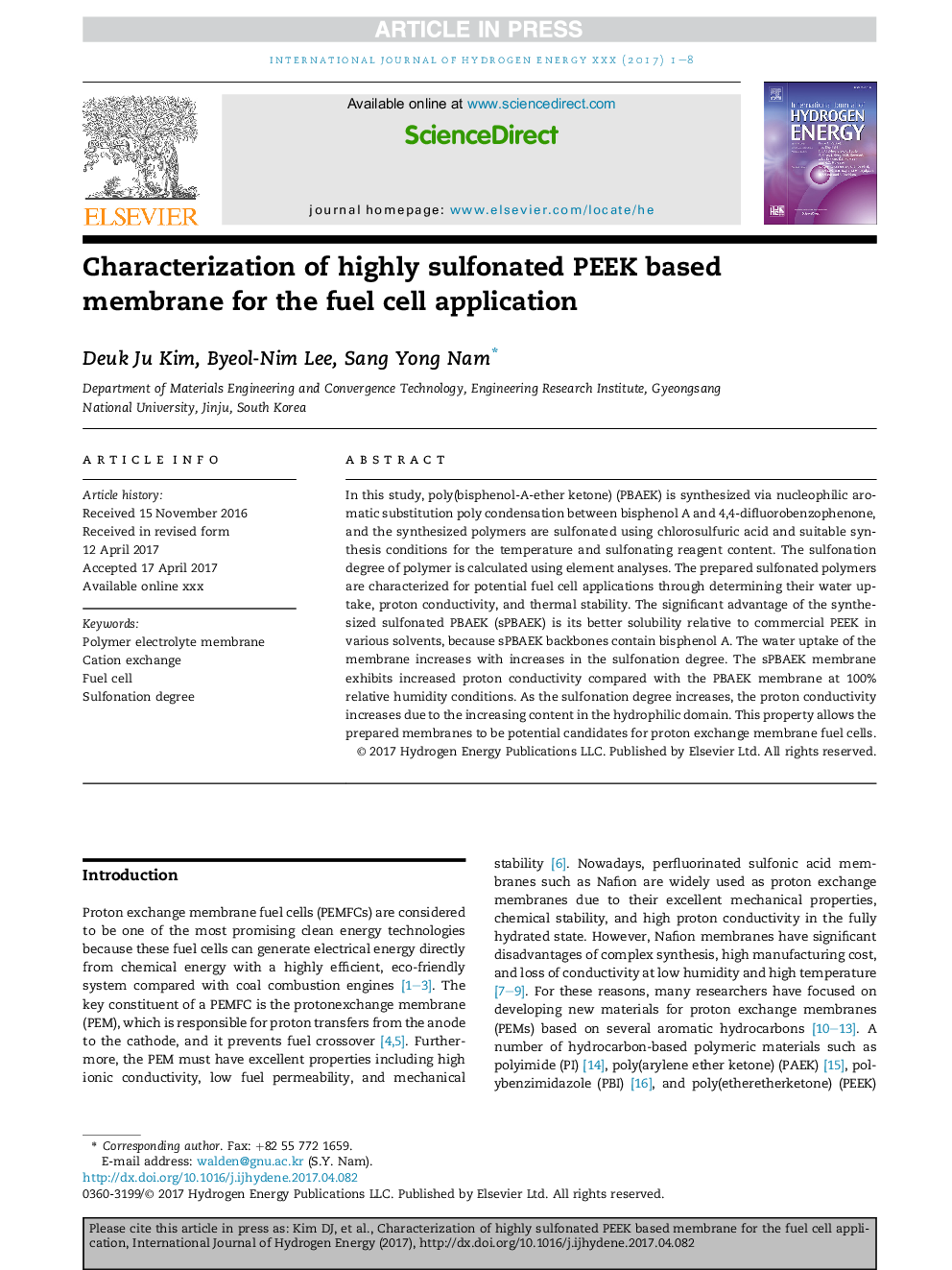| Article ID | Journal | Published Year | Pages | File Type |
|---|---|---|---|---|
| 5145547 | International Journal of Hydrogen Energy | 2017 | 8 Pages |
Abstract
In this study, poly(bisphenol-A-ether ketone) (PBAEK) is synthesized via nucleophilic aromatic substitution poly condensation between bisphenol A and 4,4-difluorobenzophenone, and the synthesized polymers are sulfonated using chlorosulfuric acid and suitable synthesis conditions for the temperature and sulfonating reagent content. The sulfonation degree of polymer is calculated using element analyses. The prepared sulfonated polymers are characterized for potential fuel cell applications through determining their water uptake, proton conductivity, and thermal stability. The significant advantage of the synthesized sulfonated PBAEK (sPBAEK) is its better solubility relative to commercial PEEK in various solvents, because sPBAEK backbones contain bisphenol A. The water uptake of the membrane increases with increases in the sulfonation degree. The sPBAEK membrane exhibits increased proton conductivity compared with the PBAEK membrane at 100% relative humidity conditions. As the sulfonation degree increases, the proton conductivity increases due to the increasing content in the hydrophilic domain. This property allows the prepared membranes to be potential candidates for proton exchange membrane fuel cells.
Related Topics
Physical Sciences and Engineering
Chemistry
Electrochemistry
Authors
Deuk Ju Kim, Byeol-Nim Lee, Sang Yong Nam,
